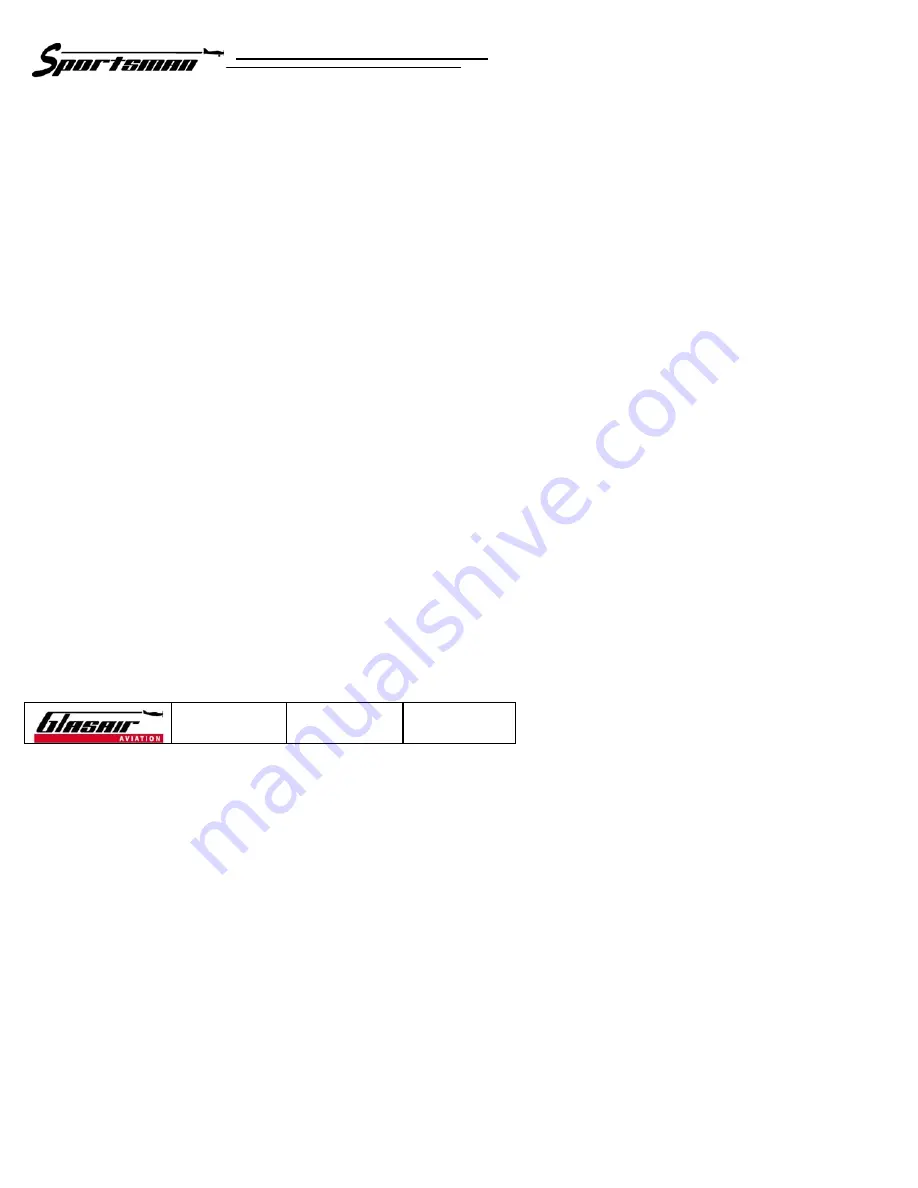
R
EVISION
:
-
D
ATE
:
12/29/04
P
AGE
:
14
Copyright
2004 Glasair Aviation, LLC Arlington, Washington All rights reserved
mistake of letting everyone come. You’ll be more relaxed and
level-headed without the additional pressure of a large audience.
5. If you are at a controlled airfield, plan your first flight when the
airport is least busy. Early morning is usually best.
6. You should have 4,000 to 5,000 ft. of runway for the first flight.
7. Check oil and fuel quantities and perform a very thorough preflight
inspection.
8. Carry ballast, if necessary, to position the CG in the middle of its
allowed range. Make sure that the ballast is adequately secured.
9. Wear a parachute and practice getting out of the airplane quickly.
After you feel confident with your high-speed taxi tests and all systems
look good, you are ready for your first takeoff and flight. Again, you
should have good weather, no wind and clear skies.
NOTE
Your first few flights should be accomplished with about half
fuel; 15 to 20 gallons is plenty. This is enough fuel to remain
airborne for awhile, but not enough to add unnecessary weight
to the airframe.
For the first takeoff, follow the normal takeoff procedures described in
Section 4-6 of this manual. Align the airplane with the centerline of the
runway, select the first notch of flaps and smoothly apply full power,
adding right rudder as necessary to correct for engine torque effects.
Hold full aft stick to maintain tailwheel steering until the rudder






























